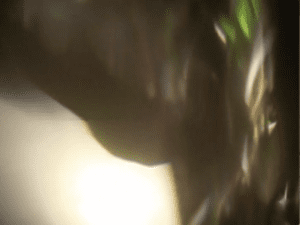My very first impression of LUMIA was aurora. No matter the static pictures or the dynamic ones, they all look like something from beyond the sky, as a reviewer for the Sun has pointed out, LUMIA is something that “changing and extending as far as the eye can reach”. However, with the development of LUMIA art, people also gradually found the relationship and similarities between LUMIA and the aurora, or even the nebula. But still, as mentioned in the documentary, there would be no same LUMIA in the world. It is beautiful and unique. In the documentary there was a scene (00:48) where a simple LUMIA installation was working, it feels like when I put my glass/plastic bottle under the sunlight. It could produce magical light but the process is so easy, which was a little confusing.

According to Earl Reiback, Wilfred “deserves far more fame than he got, cause he created a truly new art form”. Wilfred came up with the idea of light art when there were few art forms like that. Beginning in 1734, a model for the clavecin ocu/aire (ocular harpsichord) appeared. The device “combined candles, mirrors, and colored papers to produce light reflections whose seven spectral hues correlated to the seven tones of the musical scale”. But what Wilfred thought about was an instrument that “solely for silent compositions radically differed from the earlier tradition”, which his audiences had never experienced before. That was the foundation of LUMIA art. Wilfred’s road of exploring was not that smooth, though he received so many praises from so many people in the society. For a period of time when he turned his attention to projects that could supplement his income, but we still cannot deny his great work and contribution. “Wilfred is important as scientist, inventor artist, even though he is being forgotten he is still important.” Having positioned LUMIA “as an art rooted in scientific underpinnings of the greatest importance to the human experience”, Wilfred can be said as a successful artist who created a truly new art form, though his success “appears to have depended largely on his ability to articulate a relevant framework for light itself, one that connected LUMIA in timely ways to the questioning of the essential truths of the broader universe”.
References: